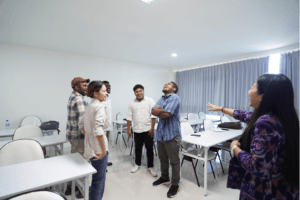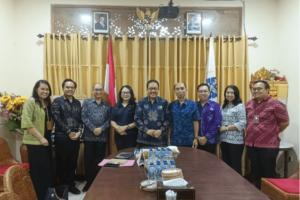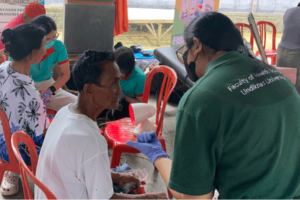
Leveraging Others’ Popularity: Political Reflections from the Farel Prayoga Phenomenon
Denpasar – In today’s digital era, popularity can be a powerful tool, not only in the entertainment world but also in the political and social spheres. The phenomenon of Farel Prayoga, a child who went viral after his captivating performance at the presidential palace during the Independence Day celebration on August 17, 2022, provides us with deep insights into how someone’s popularity can be utilized by various public figures.
Farel Prayoga is a tangible example of how the stage of popularity works. After his stunning performance at the palace, Farel was invited by various figures from ministers, governors, to big businessmen. Not only public officials, but top artists also competed to invite him to perform at various events. This phenomenon shows that “figures from various professions will rise in popularity through Farel’s stage,” as expressed by Dr. Drs. I Nyoman Subanda, M.Si. Those who are already popular want to add to their popularity, while those less known want to gain public attention through association with Farel.
In a world increasingly connected through social media, netizens play an important role in determining who gets the spotlight. Farel Prayoga, with his popularity, becomes a magnet for netizens. Public figures who appear with Farel automatically gain additional appeal in the eyes of netizens. This aligns with Dr. Subanda’s statement that, “by sticking to Farel Prayoga, one will have a magnetic attraction and radiant glow that shines in all directions.” This social media popularity not only enhances their image but also boosts electability, especially for political figures who use every opportunity to increase public acceptance.
Farel also becomes a symbol of social concern. Inviting Farel and showing concern for him seemingly reflects care for the poor and oppressed. “By caring for Farel, we will care for the poor,” said Dr. Subanda. Public figures utilize this to build an image of being concerned about poverty and humanity. However, this concern often becomes a tool for image-building in the eyes of the public rather than a genuine goal. Through Farel, they can build a positive image and well-packaged humanitarian campaigns.
From the Farel Prayoga phenomenon, there are several lessons we can learn. First, many public figures prefer to compete for the stage of popularity rather than creating their own stage. Second, they prefer to leverage the magnetism of others’ popularity rather than tapping into their own potential magnetism. Third, the concern they show is often more image-driven than genuinely caring.
As Dr. Subanda concluded, “Concern is abstract, concern is only a path, not a goal. Concern is for us, not for him. Concern is in the eyes of netizens, not in the caring heart.” This statement underscores that actions appearing caring and charitable in the media are often driven by personal interests to enhance image and popularity, rather than a genuine urge to help others.
The Farel Prayoga phenomenon teaches us many things about the dynamics of popularity and concern in the digital era. It shows how someone’s popularity can be leveraged by various figures to boost their image. This reminds us to be more critical in viewing acts of concern in the media, and encourages us to tap into our own potential to create an authentic stage of popularity and genuine concern. This phenomenon also invites us to reflect on whether we are using popularity and concern as tools for image-building or truly for more noble purposes.



